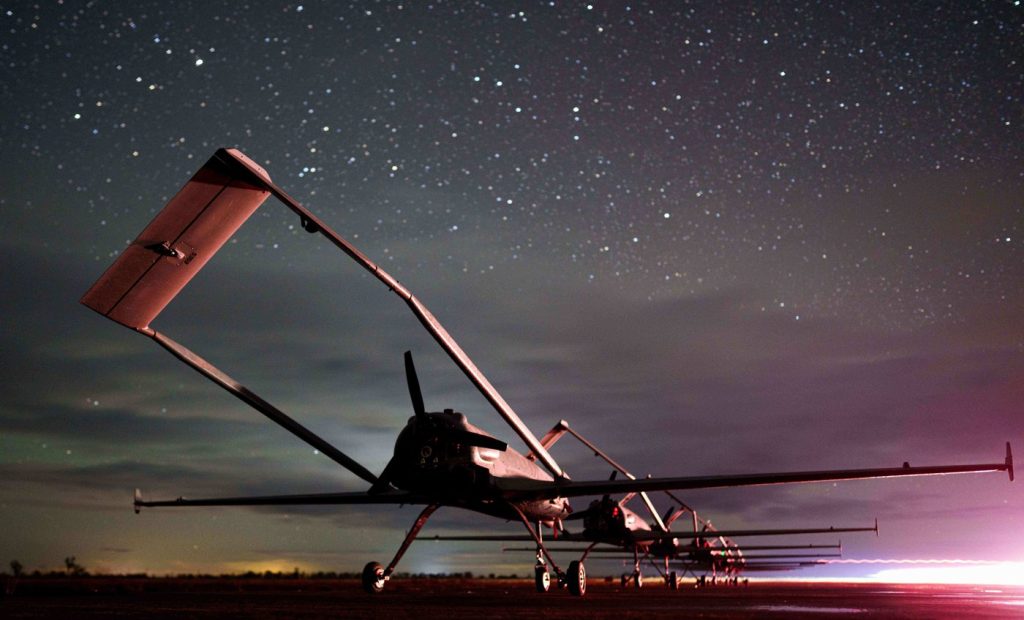At a concealed location in rural Ukraine, Ukrainian forces are assembling attack drones during the night to conduct strikes deep into Russia. These attacks are strategically aimed at critical infrastructure such as oil refineries, fuel depots, and military logistics hubs. Since the summer, Ukraine's long-range drone campaign has significantly intensified, targeting energy infrastructure across Russia and stretching its air defenses thin.
The drones are built from parts sourced from a network of workshops, enabling them to operate at greater distances than ever before in the conflict. Officers in body armor move swiftly as headlamps glow red to maintain stealth. The engines make noise comparable to old motorcycles while the exhaust fumes drift in the moonless night. One by one, the drones take off from a makeshift runway, heading eastward. These strikes have triggered gasoline shortages in Russia and even led to rationing in certain regions, exposing vulnerabilities in the country’s infrastructure.
Western analysts assess that although the attacks on Russian energy infrastructure have had a serious impact, they have not been crippling. Ukrainian drones have reportedly struck 16 major Russian refineries, which account for approximately 38% of Russia’s nominal refining capacity. However, the actual damage has been limited as many plants managed to resume operations within weeks, and overall refining output has been mitigated by idle capacity and existing fuel reserves.
Despite this, the deep strikes have allowed Kyiv to gain the initiative at a crucial juncture. The United States and Europe are increasing sanctions on Russia’s oil industry concurrently with stalled requests for U.S. long-range Tomahawk missiles. Ukrainian President Volodymyr Zelenskyy asserts that Ukraine’s enhanced long-range strike capabilities are inflicting real damage—compelling the Kremlin to import fuel and limit exports. He estimates that Russia has lost up to 20% of its gasoline supply as a direct result of these strikes.
At the undisclosed launch site, a commander known by the call sign Fidel observes through night-vision goggles as the drones ascend into the sky. He emphasizes that “drones are evolving”, boasting a range extension from 500 kilometers (310 miles) to 1,000 kilometers (620 miles). He identifies three essential components of successful operations: the drones, the personnel, and meticulous planning, stating, “For us, this is a holy mission.”
Much of Ukraine's fleet consists of domestically-produced drones. The Liutyi, a critical drone in these nighttime missions, features a simple design that allows for easy assembly and modification to evade frontline air defenses. Exemplifying Ukraine’s no-frills war production philosophy, the Liutyi, which means “fierce” in Ukrainian, has become a source of national pride, even featured on a local postage stamp.
The operational range of these drones has expanded greatly, allowing for strikes within a 1,000-kilometer radius of the border, representing a shift in the conflict's geography. A year ago, attacks were restricted primarily to western regions close to the border. Additionally, the costs of producing long-range drones have reduced significantly, now being manufactured for as little as $55,000, which places further strain on expensive air defense systems.
According to Adriano Bosoni, director of analysis at RANE, “Ukraine is getting better at taking the war inside Russia.” He notes that for most of the conflict, Russia believed its territory to be safe, but this is no longer the case. The strategic aim is logistic attrition; by compelling Russia to redirect supplies and stretch its air defenses across a wider area, Kyiv aims to weaken Moscow’s ability to sustain extensive military operations.
The International Energy Agency has observed that repeated drone attacks have reduced Russia's refining capacity by around 500,000 barrels per day, which has led to domestic fuel shortages and limited diesel and jet fuel exports, despite overall global oil production remaining stable. This surge in Ukraine's local drone strike capabilities allows for independent drone launches, circumventing the need for Western approval required for imported long-range weapons. Importantly, allies escalated sanctions only after Ukraine had been actively striking Russian refineries for several months.
Each mission's planning is characterized by trade-offs, with less than 30% of the drones reaching their intended targets. Fidel reflects on the human cost of the conflict, stating, “War has fallen to our generation so that we can fight for our kids and they can live in a free democratic country." He highlights the value of the experience being gained, which he believes will be crucial for nations across the globe in the future.










